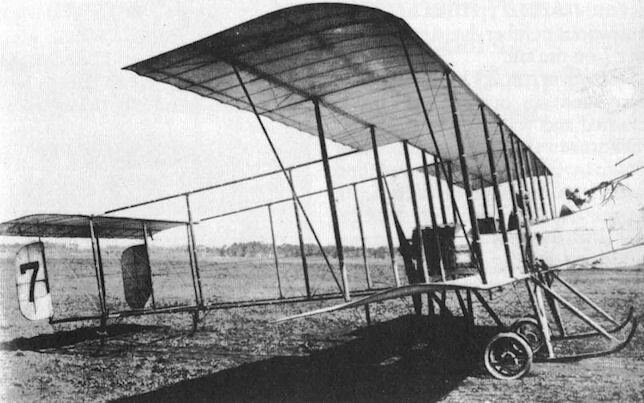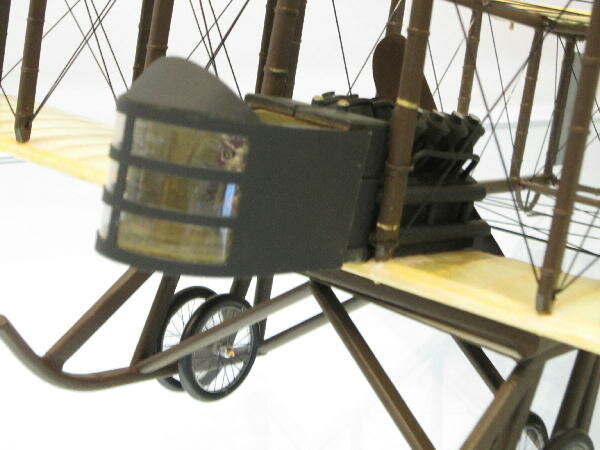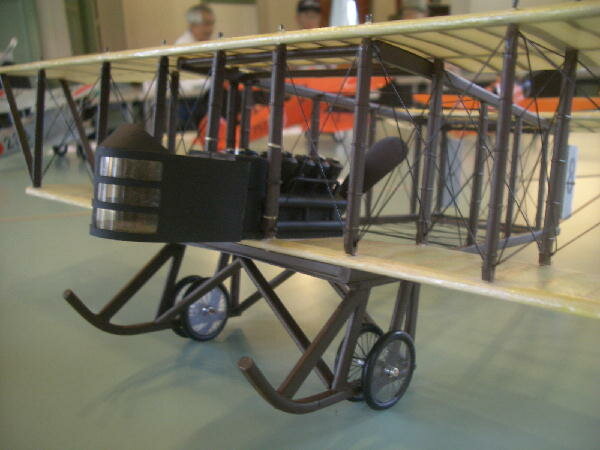You are using an out of date browser. It may not display this or other websites correctly.
You should upgrade or use an alternative browser.
You should upgrade or use an alternative browser.
Maurice Farman Identification request
- Thread starter Mavrick5
- Start date
- Joined
- 16 January 2015
- Messages
- 743
- Reaction score
- 2,946
Adding the source of the images would have made things a bit easier.
It appears to be a Converted Type Mo (Maurice Farman Type) Aeroplane.

It appears to be a Converted Type Mo (Maurice Farman Type) Aeroplane.
Army Type Mo (Maurice Farman Type) 1913 Aeroplane
Army Lt Kenjiro Nagasawa and Lt Shigeru Sawada were sent to France to study aviation during the period july 1912 to Februry 1913. At the end of their stay in Europe, they bought a Maurice Farman 1912 aeroplane which arrived in Japan by ship in May 1913. This new aeroplane proved superior to all other imported aeroplanes and japanese-made Kaishiki types in stability, control and reliability. This prompted the purchase of four more of this type, which by then, a year later, had been improved and were referred to as the Maurice Farman 1913 models.
When these disassembled parts arrived they were studied by the PMBRA with the idea of manufacturing them in Japan. Under the guidance of Nagasawa and Sawada of the PMBRA, the Tokyo Army Artillery Arsenal in Koishigawa, Tokyo, built the airframes and the 70hp Renault rotary engines under the supervision of Army Capt Haruhiko Uemura of the Arsenal. Aeroplane number five in this Type Mo 1913 series was completed in September 1913. Eight additional aircraft were built in 1914, and beginning with No.7, steel spring heels were attached to the rear of the undercarriage skids. These could be made to dig-in and reduce the landing run. Also quite noticeable with the Type Mo 1913 was the raised seat behind the student, giving the instructor better visibility. When required, a third person could sit on the fuel tank behind the instructor. These became the first production aircraft in Japan.
In response to Japan's participation in the First World War with action against the Germans in Tsingtao, China, the Provisional Air Corps was organized and used the Mo Type 1913 aircraft as its primary equipment. Of the five aeroplanes sent to the Tsingtao campaign in September and October 1914, four were of this type, the other being a Nieuport NG. Of these four, three were imported, and the fourth japanese-built. During this campaign, these aircraft undertook reconnaissance and bombing missions, dropping 15kg (33lb) from six bomb racks, and occasionally their crews firing pistols against rifle fire from a German Taube in air-to-air combat. This experience brought later improvements to what then became the Type Mo 1913 Armed Aeroplane with one automatic rifle and provision for six 10kg (22lb) bombs. By having a 'wireless' communication system on board one of the aerocraft, in july 1913 they effectively directed artillery fire from the air for evaluation purposes.
These Type Mo aeroplanes were continually used for distance records, connecting major cities on flights punctuated with frequent emergency landings along the way, and experiencing other delays due to weather. But they held the spotlight in news coverage and were popular topics of conversation. In March 1915, the most distinguished combat aircraft of the Tsingtao campaign, the third Type Mo 1913, was put on display in the Yushukan Military Museum in Kudan, Tokyo, perhaps the world's first exhibit of an aeroplane with a combat record.
Single-engine pusher sesquiplane trainer with crew nacelle. Wooden structure with fabric covering. Elevators at nose and tail. Skid-type undercarriage with dual wheels. Crew of two in open cockpit.
70-80hp Renault eight-cylinder vee air-cooled engine, driving a Chauviere two-bladed wooden propeller.
Span 15.54m (50ft 11 3/4in); length 11.28m (37ft); height 3.45m (11ft 3 3/4in); wing area 53.8sq m (589.117sq ft)
Empty weight 580.6kg (1,280lb); loaded weight 855kg (1,885Ib); wing loading 15.9kg/sqm 3.25Ib/sq ft); power loading 12.21kg/hp (26.91lb/hp).
Maximum speed 51 kt (59mph); cruising speed 38kt (44mph); service ceiling 3,000m (9,843ft); endurance 4hr.
Four imported, twenty-two built by Army Arsenal and four built by PMBRA and others.
Converted Type Mo (Maurice Farman Type) Aeroplane
When originally built as the seventh aeroplane in May 1914 in the hangar of Tokorozawa Airfield this aeroplane was like all the other Type Mo 1913 aircraft. Flown by 2-Lt Jiro Takeda in the newsworthy flight to Tokyo on 22 May, 1914, it also established an altitude record of 2,200m on 9 june flown by 2-Lt Morikichi Sakamoto. It was then exhibited to the Crown Prince (later Emperor Showa) after landing at the Komazawa Parade Grounds. At the time Lt Sawada converted this aeroplane he had felt that it was a very lucky aeroplane, and since it was the seventh of the Type Mo, again the auspicious number, he painted number 7 on the tail.
However, on 26 July, 1914, the aeroplane ran out of luck, for it crashed and was badly damaged at Tokorozawa Airfield while being flown by Capt Tokugawa, and for a while, its remains sat idle in a hangar. At a time when much of the military strength at Tokorozawa was participating in the Tsingtao campaign in September 1914, Lt Sawada remained behind and was put in charge of pilot training and aircraft maintenance. Taking the initiative, he reassembled what he called the lucky aeroplane from its unbroken parts and replaced many others, only this time eliminating the front elevator. When completed on 19 January, 1915,this 7th Type Mo 1913 became known as the Sawada Type No.7, or more officially because of this radical modification, Kaishiki the 3rd Year Model. This change demonstrated improvements in reconnaissance capability, an increase in stability, improved maneouvrability and higher speed. By placing a machine-gun in the front-seat location no longer restricted by the front elevator, this became the first Japanese Army aircraft to be so armed.
This aeroplane was used extensively at Tokorozawaa for flight testing, until 26 May, 1915, when, being flown by Capt Naranosuke Oka, it crashed in a wheat field at Kitada, Tomioka Village, 4km north of the airfield, and the aeroplane was destroyed. However, because of the proven success of Sawada's modifications it introduced radical design changes in future Japanese aeroplanes.
Single-engined pusher sesquiplane trainer with crew nacelle. Wooden structure with fabric covering. Rear elevator only. Skid-type undercarriage with dual wheels. Crew of two in open cockpit.
70-80hp Renault eight-cylinder vee air-cooled engine, driving a Chauviere two-bladed wooden propeller.
One nose-mounted flexible machinegun.
Span 15.50m (50ft 10 1/4in); length 9.35m (30ft 8in); height 3.66m (12ft); wing area 60sq m (645.85sq ft).
Empty weight 485kg (1,069Ib); loaded weight 765kg (1,686lb); wing loading 12.7kg/sq m (2.6Ib/sq ft); power loading 9.45kg/hp (20.8Ib/hp).
Maximum speed 58kt (67mph); endurance 4hr.
One conversion in January 1915

Last edited:
Hi
The link to the original site.

The link to the original site.

Similar threads
-
-
Farman F.455 Moustique III/Super Moustique
- Started by cluttonfred
- Replies: 4
-
-
-


